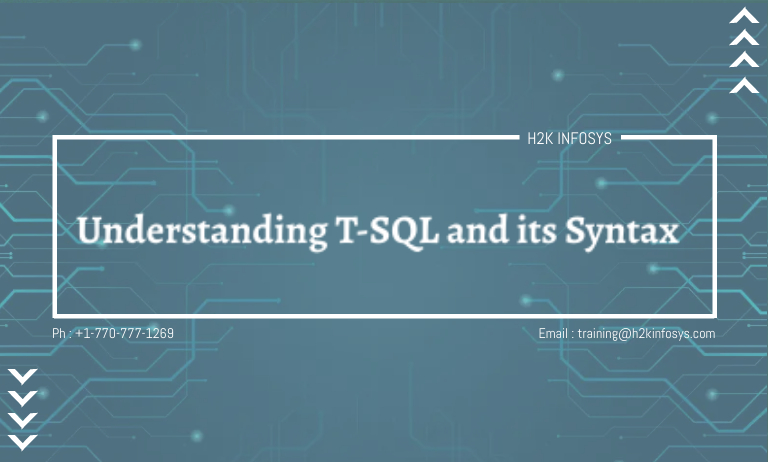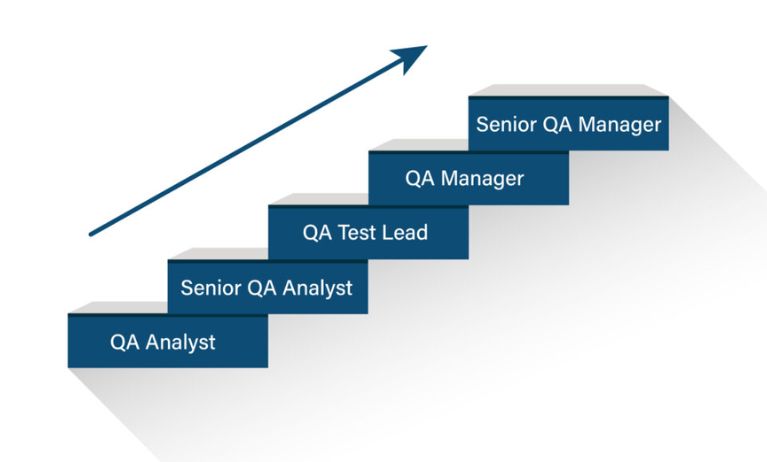Most of the T-SQL applications are very useful and also support both Microsoft SQL server and also azure SQL data. Let’s consider example SQL components like data types or operators.
Few T SQL differences in the DDL and DML elements result in the T-SQL statements and queries which are only partially supported. There are also some features and syntaxes which aren’t supported because of azure SQL data on the system of the data and operating system. Most of the instance-level features will not be supported. T SQL statements and options are not being used. If it’s been configured then the instance level options and also the operating system components along with the file system will be configured. When the plus points are available, then the appropriate alternative will often be available in some of the other ways from the SQL data or from another azure feature or the services. High availability will be built into azure and T SQL statements which are related to availability groups will not be supported by the SQL data. The dynamic management views are related to always availability groups are not supported.
T SQL syntax statements:
Core Data definition language statements are available but Data definition language statements extensions related to unsupported features like file placement on the disk will not be supported. In the SQL server, creating data and altering statements have over three dozen options.
This will not be a matter if we generate the data or the information in the SQL Database before we migrate. But if we have migrating T-SQL code that will create the database, we should compare it with the CREATE DATABASE which is Azure SQL Database with the SQL Server syntax at CREATE DATABASE which is SQL Server T-SQL to make sure all the options you use are supported. Create database for the Azure Structured query language Database also has the service objective and also the elastic pool options that apply only to SQL Database.
The create table and alter table statements will have file tables and file teams options that cannot be used on SQL Database because these features aren’t supported.
Creating login and ALTER LOGIN statements which are been supported, but will not offer all options available in SQL Server.
Collation of the system objects:
Endpoint statements of the Structure query language where the Database will not support the Windows authentication, but it will support the Azure Active Directory authentication. This will include the authentication of the Active Directory principals federated with the Azure Active Directory. For further we can see the Connection to SQL Database or Azure Synapse Analytics By Using Azure Active Directory Authentication.
Cross-platform and cross-instance queries by making use of the three or four-part names. Three-part names referencing the temp database and the current database are supported. The elastic query will be supporting only read-only files to the tables in other structure query language databases. Cross-platform who is the owner will be chaining and the trustworthy of the database property.
EXECUTE AS LOGIN. Use EXECUTE AS USER instead.
Extensible key management (EKM) for encryption keys. Transparent Data Encryption which is also called TDE and the customer will manage the keys and Always been Encrypted column master keys which will be not stored in Azure Key Vault.
Eventing: event notifications or query notifications.
File characteristics: here the Syntax is been related to the data file name, placement, and also the other file properties automatically which is been managed by the Structure query language Database.
High availability: during this, the Syntax is associated with the high availability and also the database recovery, which is able to manage by the structure search language Database which incorporates the syntax for backup, restore, Always-On, database mirroring, log shipping, recovery models.
The syntax is been associated with the snapshot, transactional, and merges replication, which isn’t available in SQL Database. Replication subscriptions are supported.
NET Framework: CLR integration
Semantic search
Server credentials: Use database scoped credentials instead.
Server-level permissions: GRANT, REVOKE, and DENY of server-level permissions aren’t supported.
Most of the server-level permissions are being replaced by the data from the table-level permissions or granted implicitly by built-in server roles.
Most of the server levels of the DM and the catalog views have similar database-level views.
Set
SHUTDOWN
sp_addmessage
sp_configure and RECONFIGURE. ALTER DATABASE SCOPED CONFIGURATION is supported.
sp_helpuser
sp_migrate_user_to_contained
Structure query language Server Agent: In this, the Syntax will rely upon the Structure query language Server Agent or the MSDB database: alerts, operators, or the central management servers. Use scripting, like Power Shell, instead of SQL Server audit: Use SQL Database auditing Use SQL Database auditing instead.
SQL Server trace.
Trace flags.
T-SQL debugging.
Server-scoped or logon triggers.
USE statement: To change database c
Azure software Synopsis of the structure query language which is a huge data analytic service enables us to query and analyze our data by making use of the T-SQL language.
We can also use the standard ANSI-compliant dialect of the Structure query language used on the Structure query language Server and Azure SQL Database for data analysis.
Transact-Structure query language will be used in the serverless Structure query language of the pool and dedicate the model which will be a reference from different objects and has most of the differences in the set of supported features.
Data formats:
| Delimited | Dedicated | Serverless |
| CSV | yes | yes |
| Parquet | yes | yes |
| Hive ORC | yes | no |
| JSON | yes | yes |
| CDM | no | no |
Storage options
| Internal storage | Dedicated | Serverless |
| Azure data | yes | yes |
| Azure blob | yes | yes |
| Azure SQL | no | no |
| Azure cosmos | no | no |
| Apache spark | no | parquet |
| Apache spark tables | no | no |
Key design decisions
| Article | Dedicated SQL pool | Serverless |
| Connection | yes | yes |
| Resource classes And concurrency | yes | no |
| Transactions | yes | no |
| User-defined | yes | yes |
| Table distribution | yes | no |
| Table indexes | yes | no |
Perquisites:
The first step will be: creating the data where we will execute the queries and then initialize the objects by keeping executing the script on the database and this script will be creating the data sources and data which has scope and external files formats which are being used to read the data in the sample.
We can also create an external table as select statements which is stored the query which results in the storage
Use db name;
GO
CREATE DATA BASE SCOPED CREADENTIALS
WITH INDETITY= ‘SHARED ACCESS SIGNATURE’
SECRET=’ sv=2018-4-23
GO
CREATE EXTERNAL DATA SOURCE
LOCATION = ‘https:// <storage account name>
);
CREATE EXTERNAL FILE FORMAT WITH (
FORMAT_TYPE = PARQUET,
DATA_COMPRESSION = ‘org.apache.hadoop.io. compress. snappycodec
);
GO
Making use of the external tables
Use db name;
GO
SELECT
Country name, population
FROM populationcetas
WHERE
Year= 2019
ORDER BY
Population DESC;
Questions
- What is use of the external table?





























7 Responses
Understanding T-SQL and its Syntax
T-SQL is known as Transact Structured Query Language, which is the product of Microsoft. Each variable, column, and expression in SQL is the data type in SQL Server. The data types are used when we create tables. We use the data type for the column of the table based on its requirements. It performs the operations on the data from the single row retrieval. It has the functionality which generates the same results as other database languages. T-SQL expands the SQL to include procedural programming, local variables, string processing, data processing, and mathematics. T-SQL applications are very useful and also support both Microsoft SQL server and also azure SQL data.
1. What is use of the external table?
Create database for the Azure Structured query language Database also has the service objective and also the elastic pool options that apply only to SQL Database.
The create table and alter table statements will have file tables and file teams options that cannot be used on SQL Database because these features aren’t supported.
Creating login and ALTER LOGIN statements which are been supported, but will not offer all options available in SQL Server.
In SQL Server, the EXTERNAL TABLE statement creates the path and folder if it doesn’t already exist. You can then use INSERT INTO to export data from a local SQL Server table to the external data source.
T-SQL also called Transact SQL is the query language specific to the Microsoft SQL Server product. It can help perform operations like retrieving the data from a single row, inserting new rows, and retrieving multiple rows. It is a procedural language that is used by the SQL. Other features include transaction control, exception and error handling, row processing and declared variables. An extension table is used to access data in external sources as if it were in a table in the database. It is used to store the result of complex queries temporarily in a new table.
Most of the T-SQL applications are very useful and also support both Microsoft SQL server and also azure SQL data. Let’s consider example SQL components like data types or operators.
Few T SQL differences in the DDL and DML elements result in the T-SQL statements and queries which are only partially supported. There are also some features and syntaxes which aren’t supported because of azure SQL data on the system of the data and operating system. Most of the instance-level features will not be supported. Core Data definition language statements are available but Data definition language statements extensions related to unsupported features like file placement on the disk will not be supported. In the SQL server, creating data and altering statements have over three dozen options.
An external table is a table whose data come from network supportive files(flat) stored outside of the database. Oracle can explain any file format supported by the SQL*Loader. An External table can access data stored in any format supported by COPY INTO statements. External tables are read-only, therefore no DML operations can be performed on them; however, external tables can be used for query and join operations. Views can be created against external tables.
creating the data where we will execute the queries and then initialize the objects by keeping executing the script on the database and this script will be creating the data sources and data which has scope and external files formats which are being used to read the data in the sample.